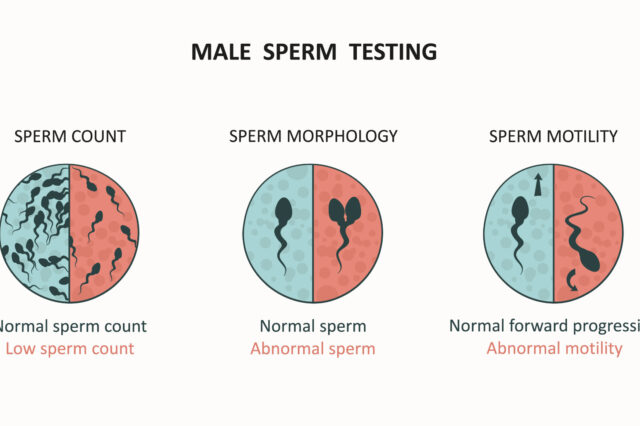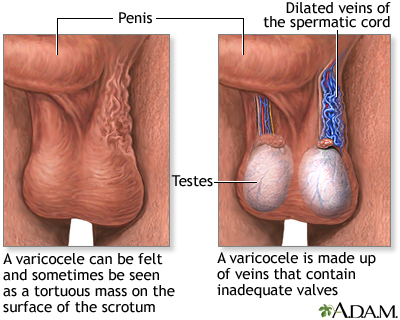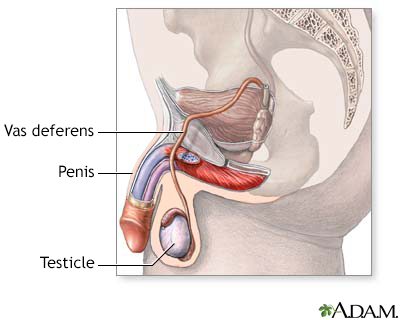From Infertility Struggles to Finding a Family at UF Health
A few years ago, Nicholas and his wife moved back to Nicholas home state of Florida to complete his training at UF Health. Their plan was that as soon as their…

Update your location to show providers, locations, and services closest to you.
A varicocele is the swelling of the veins inside the scrotum. These veins are found along the cord that holds up a man's testicles (spermatic cord).
Varicose veins - scrotum
A varicocele forms when valves inside the veins that run along the spermatic cord prevent blood from flowing properly. Blood backs up, leading to swelling and widening of the veins. (This is similar to varicose veins in the legs.)
Most of the time, varicoceles develop slowly. They are more common in men ages 15 to 25 and are most often seen on the left side of the scrotum.
A varicocele in an older man that appears suddenly may be caused by a kidney tumor, which can block blood flow to a vein.
Symptoms include:
Some men do not have symptoms.
You will have an exam of your groin area, including the scrotum and testicles. The health care provider may feel a twisted growth along the spermatic cord.
Sometimes the growth may not be able to be seen or felt, especially when you are lying down.
The testicle on the side of the varicocele may be smaller than the one on the other side.
You may also have an ultrasound of the scrotum and testicles, as well as an ultrasound of the kidneys.
A jock strap or snug underwear may help ease discomfort. You may need other treatment if the pain does not go away or you develop other symptoms.
Surgery to correct a varicocele is called varicocelectomy. For this procedure:
An alternative to surgery is varicocele embolization. For this procedure:
This method is also done without an overnight hospital stay. It uses a much smaller cut than surgery, so you will heal faster.
A varicocele is often harmless and often does not need to be treated, unless there is a change in the size of your testicle or a problem with fertility.
If you have surgery, your sperm count will likely increase and it may improve your fertility. In most cases, testicular wasting (atrophy) does not improve unless surgery is done early in adolescence.
Infertility is a complication of varicocele.
Complications from treatment may include:
Contact your provider if you discover a testicle lump or need to treat a diagnosed varicocele.


Barak S, Gordon Baker HW. Clinical management of male infertility. In: Jameson JL, De Groot LJ, de Kretser DM, et al, eds. Endocrinology: Adult and Pediatric. 7th ed. Philadelphia, PA: Elsevier Saunders; 2016:chap 141.
Goldstein M. Surgical management of male infertility. In: Partin AW, Domochowski RR, Kavoussi LR, Peters CA, eds. Campbell-Walsh-Wein Urology. 12th ed. Philadelphia, PA: Elsevier; 2021:chap 67.
Palmer LS, Palmer JS. Management of abnormalities of the external genitalia in boys. In: Partin AW, Domochowski RR, Kavoussi LR, Peters CA, eds. Campbell-Walsh-Wein Urology. 12th ed. Philadelphia, PA: Elsevier; 2021:chap 44.
Silay MS, Hoen L, Quadackaers J, et al. Treatment of varicocele in children and adolescents: A systematic review and meta-analysis from the European Association of Urology/European Society for Paediatric Urology Guidelines Panel. Eur Urol. 2019;75(3):448-461. PMID: 30316583 pubmed.ncbi.nlm.nih.gov/30316583/.


A few years ago, Nicholas and his wife moved back to Nicholas home state of Florida to complete his training at UF Health. Their plan was that as soon as their…
